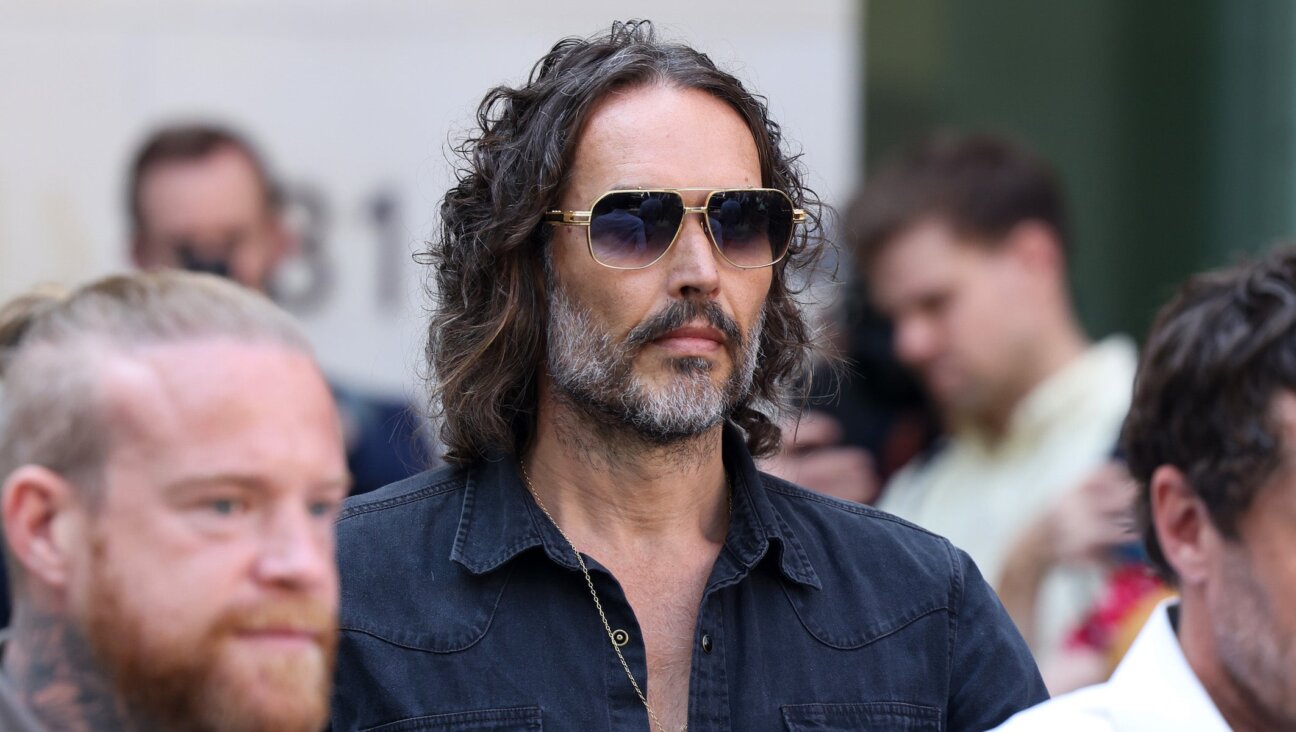The Zionist Melting Pot Boils Over
The September 1 opening of Israel’s new school year was fairly uneventful as Israeli school years go: no nationwide teachers’ strike over salaries, no student protests against tuition hikes, hardly any violent opening-day riots. Compared to the storms of recent years, the back-to-school flare-ups this fall seemed at first glance to be little more than — well, child’s play.
On closer examination, though, this year’s disruptions are worrying. They could be the harbingers of something far more serious than traditional salary and tuition disputes — namely, a mounting reluctance among various groups of Israelis to live and learn alongside one another.
That, at least, was how most Israelis interpreted a late-summer drama in Petah Tikva, Tel Aviv’s largest satellite suburb. In mid-August, a handful of privately run Orthodox schools refused to enroll several dozen Ethiopian immigrant children assigned to them, despite government threats to cut funding and revoke their licenses. The showdown ended when the schools yielded, hours before school opened, but not before parents threatened to shut down the entire city school system if state-run schools were forced to absorb the extra Ethiopians. Compromise has not ended bitterness and suspicion on both sides.
Further south, in the western foothills of Jerusalem, parents and educators in the town of Beit Shemesh were at loggerheads over a different group of newcomers, namely Orthodox Jews. Faced with a steady influx of Haredi, or ultra-Orthodox, families fleeing overcrowding in Jerusalem, the mayor decided in August to assign four classrooms for Haredi use in the city’s most prestigious secular school, the School for Languages and Cultures. Parents responded by picketing city hall, demanding that the mayor resign and carrying signs that read “Beit Shemesh is not a Haredi city” and “This is not Bnei Brak,” referring to a mostly Haredi suburb of Tel Aviv. The mayor replied that if the school refused to house the Haredi classes, this would be its last year.
Opening-day tensions ran high in Israeli Arab schools, too. Community leaders were up in arms over a decision by the education minister, Gideon Sa’ar of Likud, to ban the use in Arab schools of the word “Nakba,” Arabic for “catastrophe,” to describe the creation of Israel and the mass dislocation of Arabs that followed. Arab Israeli educators said their curriculum included both the Arab and Jewish “narratives” of Israel’s birth, but that removing the Arab version would deny their community its identity. Sa’ar, for his part, declared to the Cabinet on August 30 that “the creation of the state of Israel cannot be referred to as a tragedy.” He vowed that Israel’s Arab school system “will revise its studies.”
Tensions began last spring when Sa’ar introduced a new Israeli heritage program for use in all public schools, both Jewish and Arab, teaching about Israel’s anthem, its flag and the Jewish religious calendar. Arab educators said they would consider civil disobedience if their curriculum is forcibly “Judaized,” in the words of one Arab community official. This dispute, unlike the others, had not been resolved by opening day.
Whatever the immediate issues, though, the underlying cause of conflict is the same: demographic change. A study of Israel’s school population, released August 30 by the respected Taub Center for Social Policy Studies, showed that of the country’s 1.6 million schoolchildren, fully 48% attend schools that do not embrace or teach the state’s founding Zionist ethos, including 28% in Arab schools and 20% in Haredi schools. The combined total was 39% back in the year 2000. The Haredi schools do not even teach basic skills for employment in a modern economy, the study noted.
By contrast, the state’s mainstream secular schools account for only 39% of students, down from 46% in 2000. Enrollment in state religious schools, which follow a Modern Orthodox curriculum, has remained steady at roughly 15%.
In absolute numbers, the secular student population has dropped 3% over the past decade, while Haredi students have increased by 51%. The study was based on Education Ministry figures.
Demographic shifts are clearly behind the trouble in Beit Shemesh. Secular facilities there, like the School for Languages and Cultures, are languishing — the school was built for 450 students but enrolled only 185 this year — while Haredi classes meet in trailers and rented apartments. In Beit Shemesh and elsewhere, secular, mainstream Israelis are awaking to find they’re no longer the mainstream.
Haredi families say they only want to be left alone to live by their own rules in their own neighborhoods. But as their numbers grow, those rules become the norm in more and more neighborhoods, putting secular Jews on the defensive.
The dispute in Petah Tikva reflects a different problem, at least superficially. Integration of Ethiopian immigrants, always a challenge due to cultural and racial differences, has become far more complicated in recent years. The current wave of Ethiopian newcomers consists almost entirely of Falash Mura, descendants of Jews converted to Christianity in the past century who now want to return to Judaism. Unlike the earlier immigrants, this group comes with little or no grasp of Jewish culture and tradition. Because of their history, the new arrivals are required to undergo an expedited conversion to Judaism as a condition of their airlift and welcome. As part of the process, the Israeli Chief Rabbinate requires the children to attend Orthodox schools for at least two years.
School officials in Petah Tikva and elsewhere say that while immigrant children entering first grade acclimate quickly, those entering in higher grades face daunting challenges. Most know little or no Hebrew, and many are illiterate. Parachuted into advanced Talmud and rabbinic philosophy classes, most fall quickly behind. The problem is particularly acute in private Orthodox schools like those in Petah Tikva, which were created by highly observant families seeking accelerated religious studies. Enrolling the newest immigrants is unfair to immigrants and schools alike, administrators say. In several cases older immigrant children were placed in special classes, but parents and government officials have rejected those as a form of segregation.
Whatever the challenges, Education Ministry officials charge that the recalcitrant schools have balked repeatedly in the past on various pretexts. The real reason, the officials say, is simple racism.
Disputes in Arab schools are different in nature, mainly because neither side even pretends to seek a melding of values and identities. The question those schools pose to the society is how to imagine coexistence without integration.
For all their differences, though, the September brush fires are all reflections of a single, stark crisis: The Jewish state is inexorably turning into something its founders never intended, something that may not even be sustainable, and nobody has a clue what to do about it.
Contact J.J. Goldberg at [email protected]























